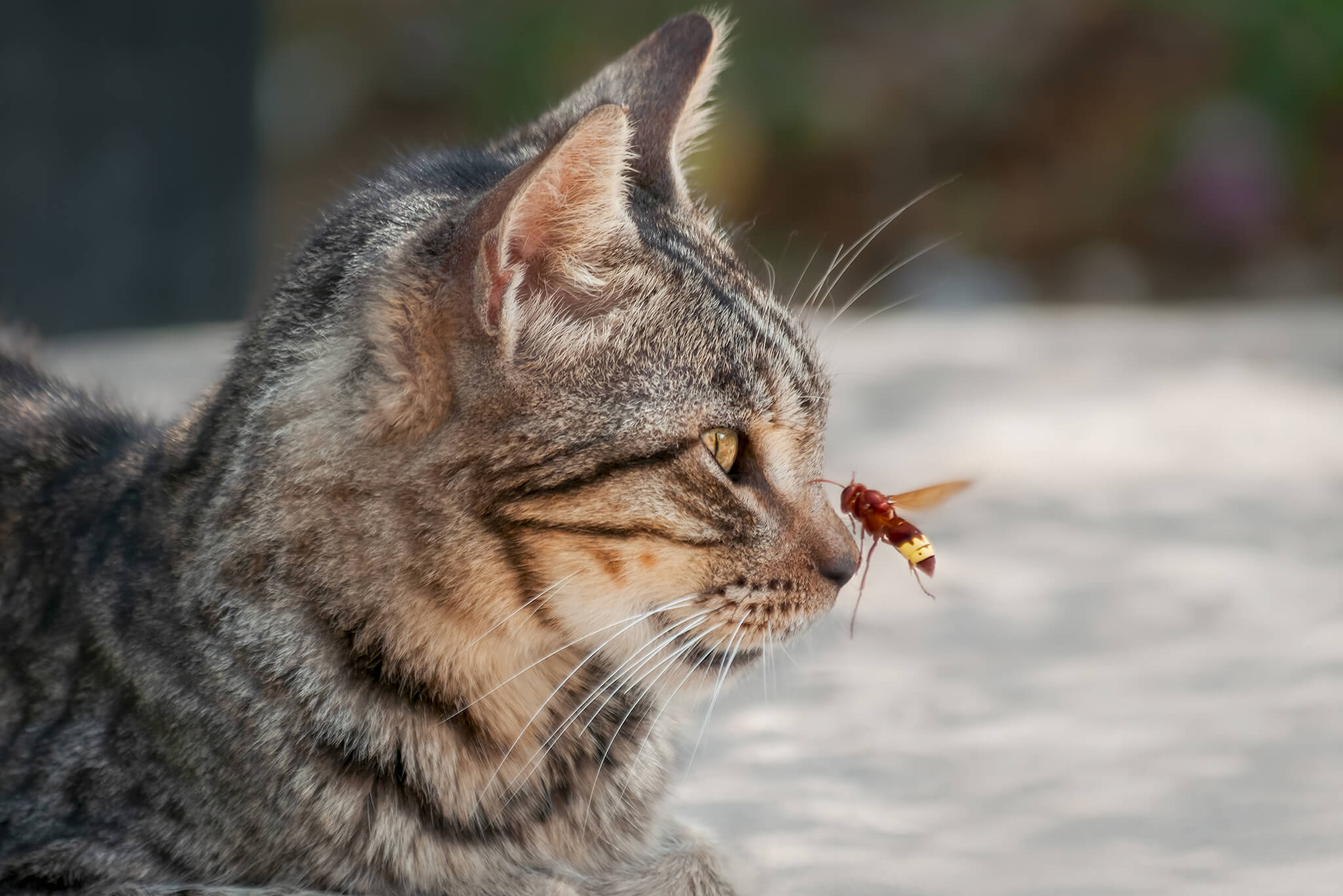When your cat gets stung by a bee, it can be a scary moment for both you and your pet. We’ll help you understand what steps you should take if this happens. We’ll cover how to spot the signs of a bee sting, why it’s important to act quickly, and why reaching out to a professional like Rutherford Veterinary Hospital in Dallas, TX, is a smart choice. If you’re ever in doubt or need immediate assistance, please call us at (214) 826-4166. Our team is ready to support you and your cat through this unexpected situation.
Understanding Bee Stings in Cats
Cats are curious creatures, often intrigued by buzzing insects like bees. However, this curiosity can sometimes lead to a bee sting. A sting can cause pain and swelling, and in some cases, an allergic reaction. It’s essential to know the signs of a bee sting, which can include your cat pawing at their face, swelling in a specific area, or showing signs of distress. Quick action can make a big difference in your cat’s comfort and health.
Why Quick Action Is Important
If your cat is stung by a bee, the first step is to stay calm. While most bee stings can be managed without severe complications, quick identification and action are key to preventing further issues. It’s vital to monitor your cat for any signs of an allergic reaction, such as difficulty breathing, excessive swelling, or weakness. These symptoms require immediate attention from a professional.
First Steps After a Bee Sting
Upon noticing your cat has been stung by a bee, there are a few things you can do to help. Firstly, try to safely remove the stinger if it’s still present. It’s important not to squeeze the stinger, as this can release more venom. Instead, gently scrape it out with a credit card or something similar. After removing the stinger, keep an eye on your cat for any signs of discomfort or allergic reaction.
Monitoring Your Cat
After a bee sting, closely watch your cat for the next 24 hours. Look for any changes in behavior, appetite, or swelling. If you notice anything concerning, it’s better to err on the side of caution and get in touch with Rutherford Veterinary Hospital at (214) 826-4166. We can provide advice and, if necessary, invite you in for a check-up to ensure everything is okay.
When to Call Rutherford Veterinary Hospital
While many bee stings can be managed at home, there are certain situations where it’s crucial to seek professional help. If your cat shows any signs of an allergic reaction, has been stung multiple times, or if the sting is inside their mouth or throat, it’s important to call us immediately. These situations can quickly become serious, and professional care from Rutherford Veterinary Hospital can provide the necessary treatment to keep your cat safe.
Professional Care for Bee Stings
At Rutherford Veterinary Hospital in Dallas, TX, we’re equipped to handle bee stings and their complications. Our team can provide treatments to reduce swelling, manage pain, and address any allergic reactions. If you’re concerned about a bee sting, calling us at (214) 826-4166 for advice or to schedule an appointment is the best step you can take to ensure your cat’s health and peace of mind.
Preventing Future Bee Stings
While it’s not always possible to prevent bee stings, there are steps you can take to reduce the risk. Keeping your cat indoors during peak bee activity times, such as midday in spring and summer, can help. Additionally, avoiding flowering plants and sweet foods outside that attract bees can make your outdoor space safer for your cat.
Creating a Safe Environment
Creating a safe environment for your cat involves being mindful of their outdoor surroundings. If your cat enjoys time outside, consider supervised outdoor time in areas that are less likely to attract bees. Regularly check your yard for bee nests and remove them safely if found. These simple steps can help minimize the risk of bee stings and keep your cat safe and happy.
Call Rutherford Veterinary Hospital at Any Sign of an Allergic Reaction
Dealing with a cat that’s been stung by a bee can be a stressful experience, but knowing what to do can help significantly. From understanding the signs of a bee sting to knowing when to call the vet, these steps can help you navigate the situation more effectively. Remember, if you’re ever in doubt or if your cat shows any signs of an allergic reaction, calling Rutherford Veterinary Hospital in Dallas, TX, at (214) 826-4166 is always the best course of action. Our team is here to provide the care and support your cat needs to recover swiftly from a bee sting.


 Have an Emergency?
Have an Emergency?